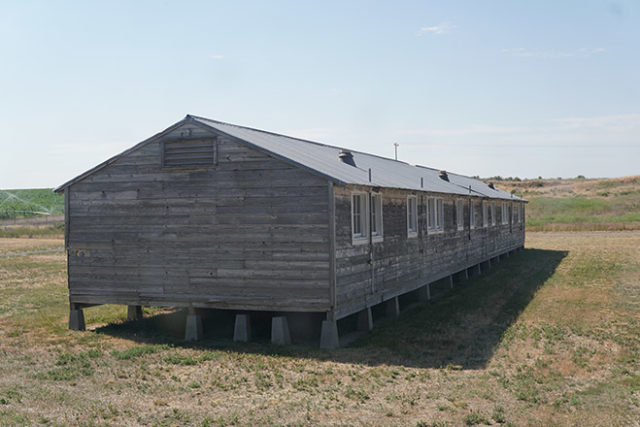By Nick Turner
About two months ago, I found myself staring at the entrance of a rectangular building in a dry field somewhere in southern Idaho. Inside, it was empty. Dust was wafting up between the floorboards and catching the sunlight shining through the pane glass windows that lined the walls.
This is where they stayed, I thought to myself. I was standing in the exact place where, over the course of three years, tens of thousands of people just like me were held against their will for no reason other than that, well, they were just like me. This is where families lived side by side, separated by nothing but blankets. This part of the state was notorious for dust storms. It must have been cold during the winter, too, and hot during the summer. Life must have been hard.
I realized then how lucky I am to have been born decades after the war. I avoided the largest mass incarceration in United States history by only a generation or two. I wondered how different this country—and my life—would be if this had never happened.
The Minidoka Incarceration Camp is one of ten relocation centers created during WWII in response to the Japanese Imperial Army’s attack on Pearl Harbor. It was in operation for more than three years, from August 1942 to October 1945, and held more than nine thousand people at its peak capacity, all of them persons of Japanese ancestry, both citizens and “resident aliens,” predominantly from Oregon, Washington and Alaska.
Few signs of the camp remain intact. Nonprofit groups and others have worked to restore or rebuild many of the original structures to immortalize and commemorate those who were incarcerated there. Many people visit the site as well, to see it in person and educate themselves about a part of history commonly breezed over in school.
The Minidoka Pilgrimage enjoyed its 15th successful trip to the site just last month. Each year the Minidoka Pilgrimage Planning Committee, or MPCC, an all-volunteer committee based in Seattle, organizes a trip to the former relocation center. This year more than 320 “pilgrims” made the trip to Twin Falls, Idaho. Over four eventful days of educational programs, speeches, breakout groups and, of course, a tour of the site itself, participants got a closer look at one of history’s harshest lessons. I was given the opportunity to attend this year’s pilgrimage as one of the committee’s scholarship students.
The range of emotions I felt during the pilgrimage is and always will be indescribable. I was learning about a dark time in our country’s history, yet I was making lasting friendships. At times, I couldn’t hold back tears, at times I couldn’t stop laughing, but through it all, I knew I was in a sacred place. I could feel the weight of history on my shoulders.
I heard many stories during the Pilgrimage, and with the support of the North American Post, I would like to share them. I will be writing about them here in this column. All the information I reveal was obtained with respect, transparency and the full permission of those cited, mentioned or otherwise involved in anything I write.
If there’s one thing I learned, standing in the blaring sun on those dusty hills in Idaho, it’s that the future is determined by the past. My business is in telling the stories of those who have come and gone, and those who are still finding their path in life. I hope you learn something from them, just as I did.
[About the Author]
Nick was born and raised in Portland, Oregon. His mother was born in Tokyo and he’s the youngest of three children. He moved to Seattle three years ago and will graduate from Seattle University next year with a degree in journalism. Nick has been writing for the Post for two years. His dream is to travel the world as a foreign correspondent.







